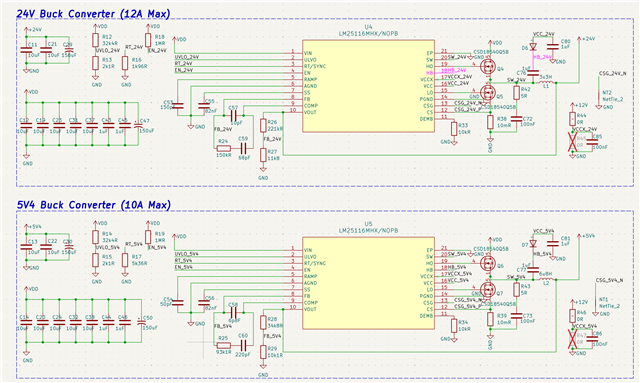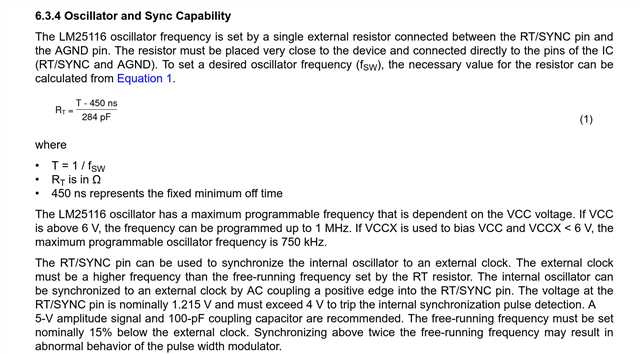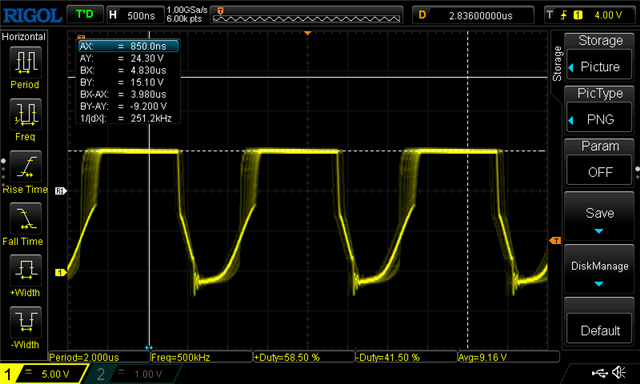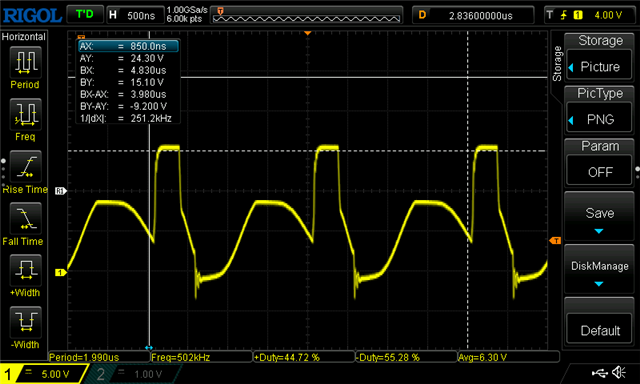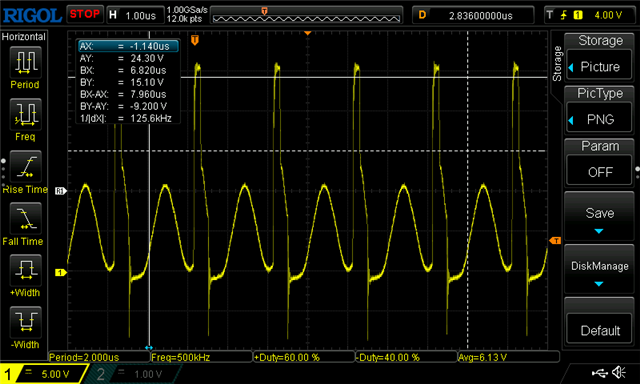Tool/software:
Hi,
I am having some trouble with my LM25116 buck converter design.I have two LM25116 ICs on my PCB. Both of them need to be able to handle an input range of 25V - 33V2. One of them has an output voltage of 24V with a switching frequency of 1MHz and the other has a output voltage of 5V4 operating at 500kHz. Both of their VCCs are powered by another small buck converter LMZM23600SILT with an output voltage of 12V. The 24V LM25116 does not seem to be regulating the voltage at all. The voltage at the feedback pin varies as the input voltage changes. All the solder joints look good but the duty cycle remains at 70% regardless of the input voltage. However, with the almost identical design, the 5V4 regulator does not seem to suffer this issue. But there is a huge gate ringing issue once the input voltage is around 8V. I have attached the schematics below. Also, I would like to discuss this issue further in private. I have attached the schematics below.
